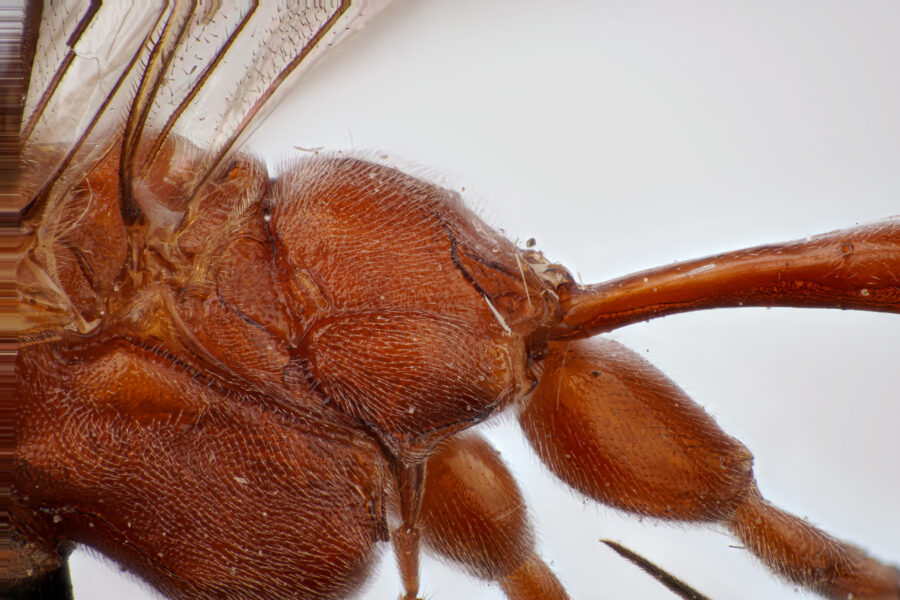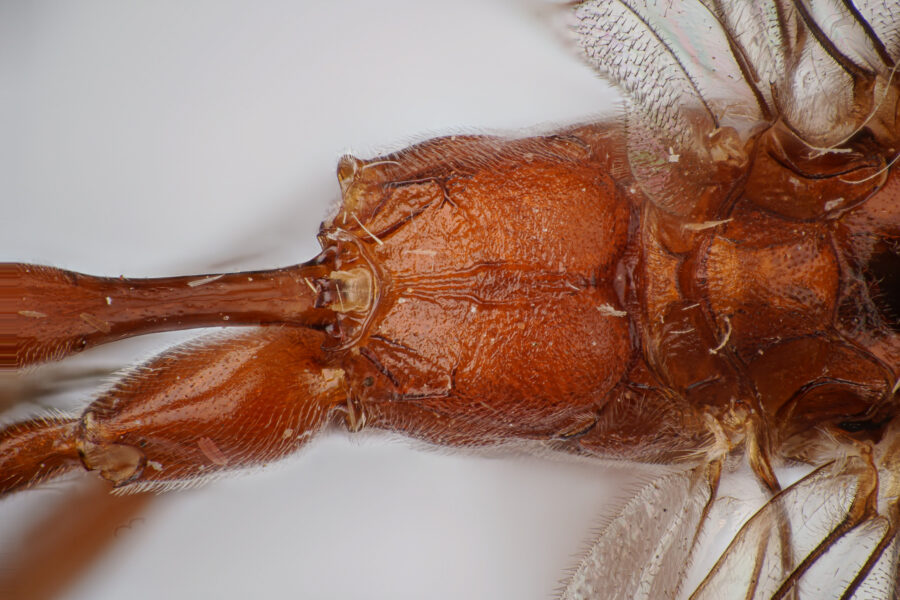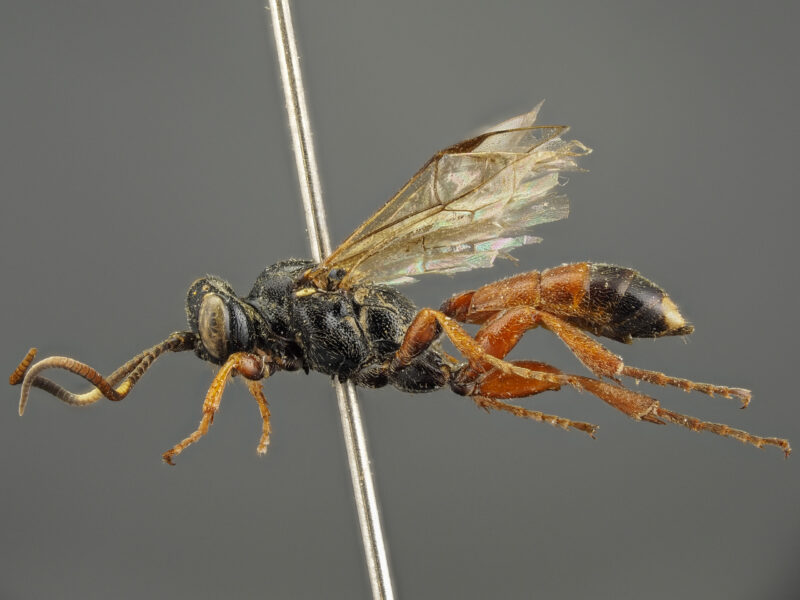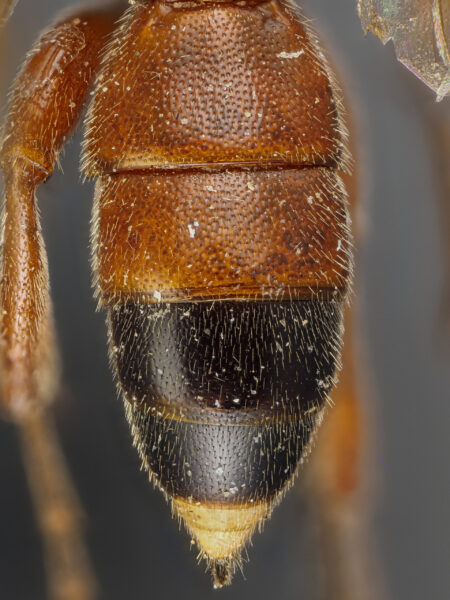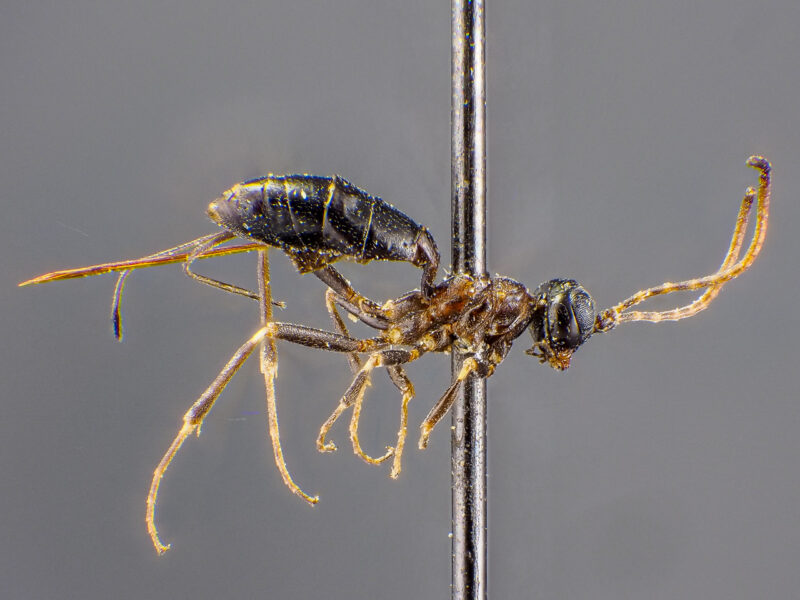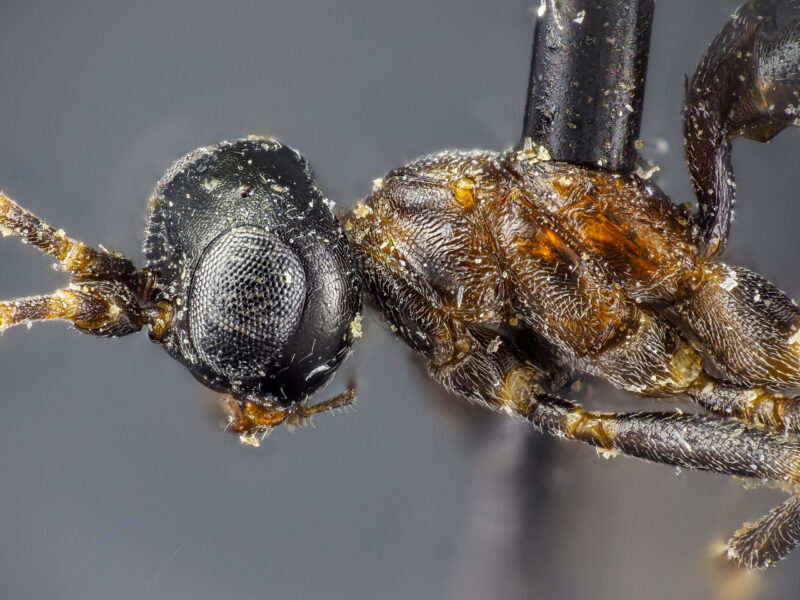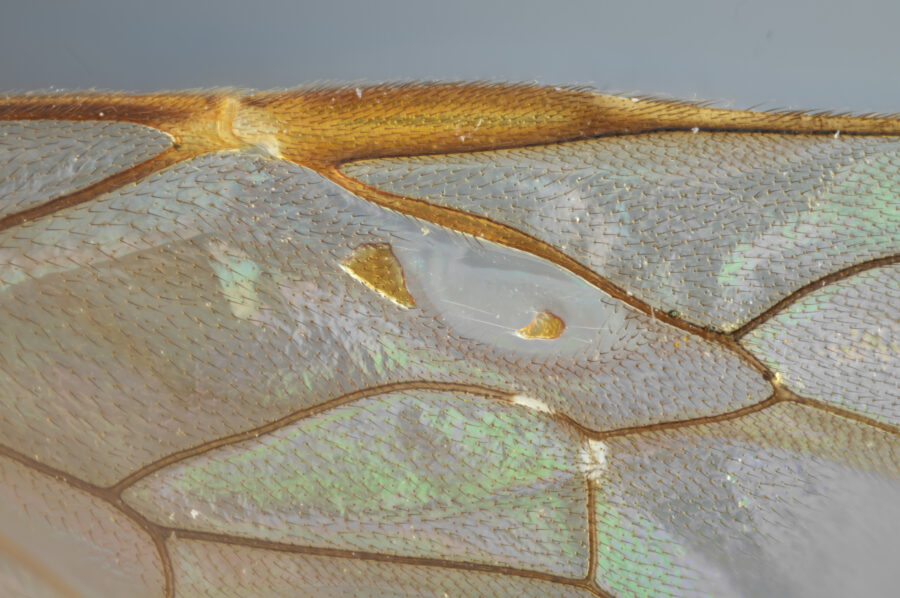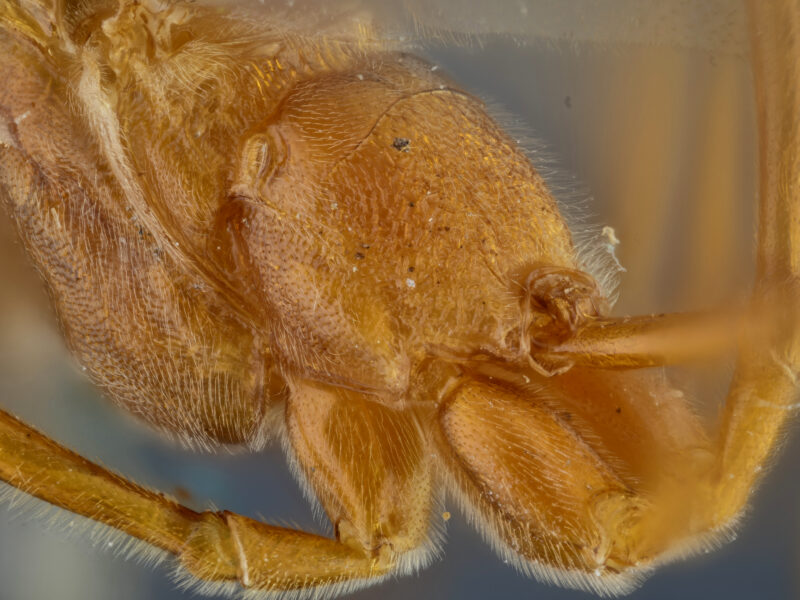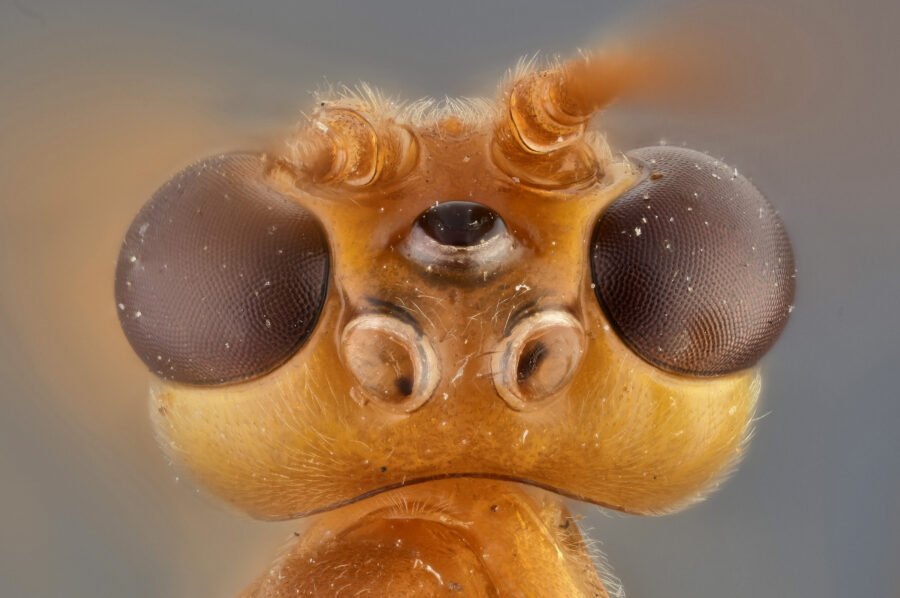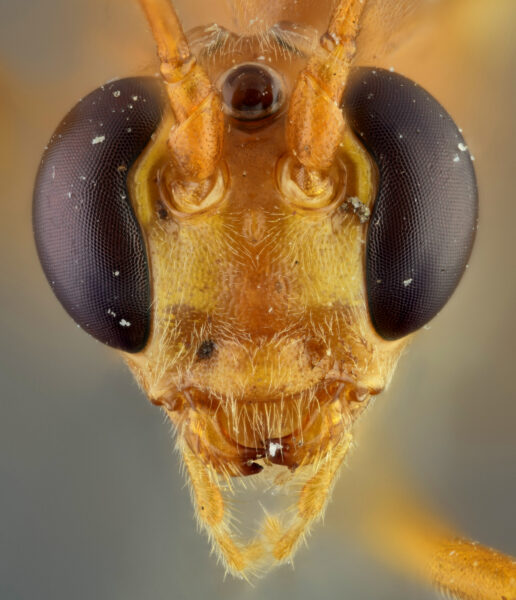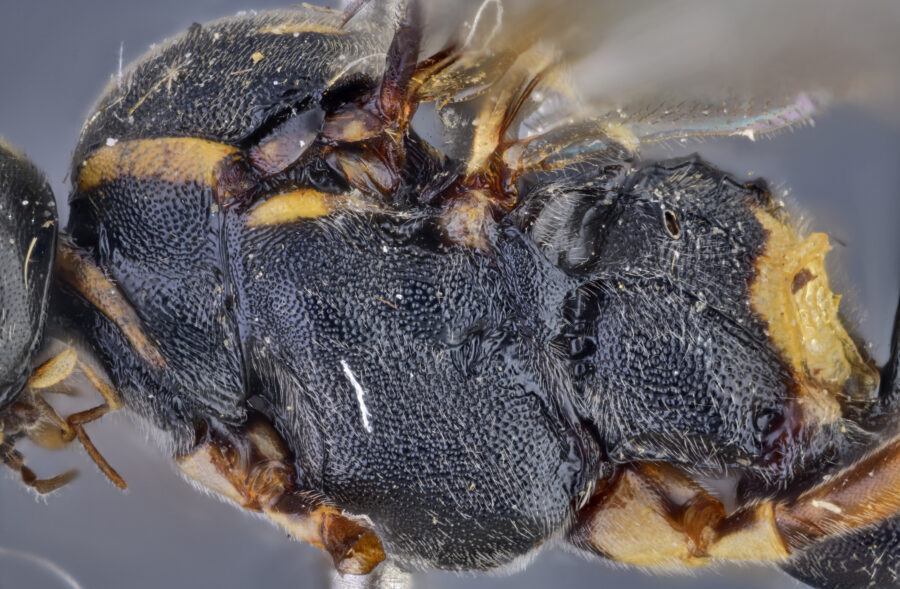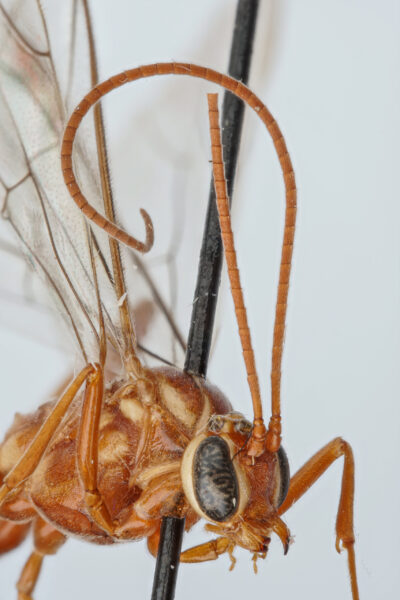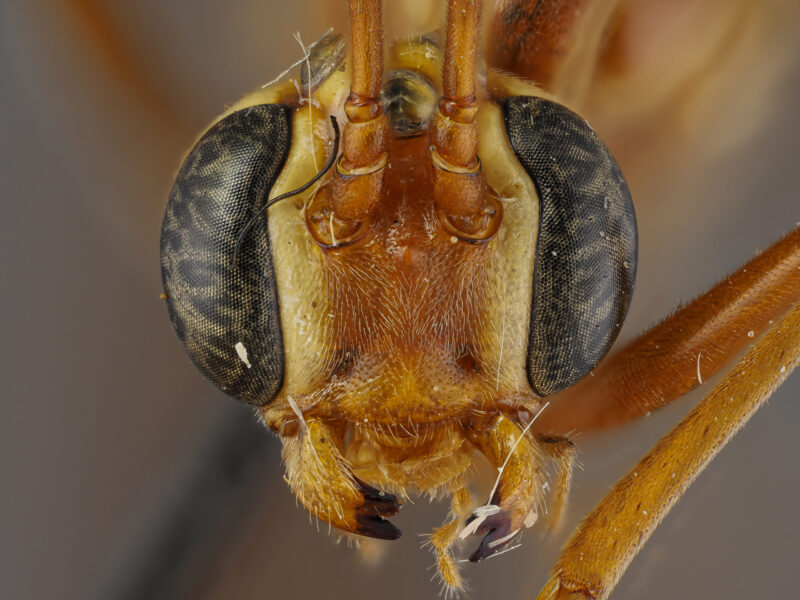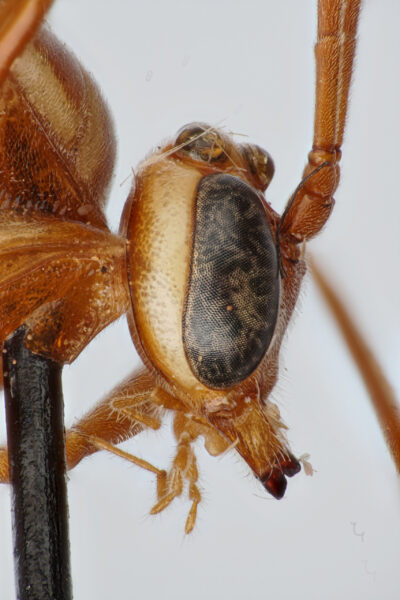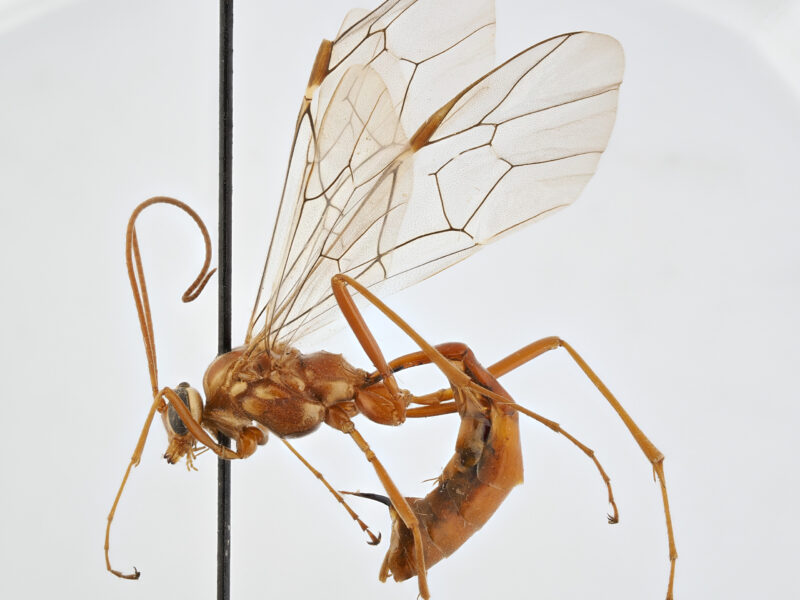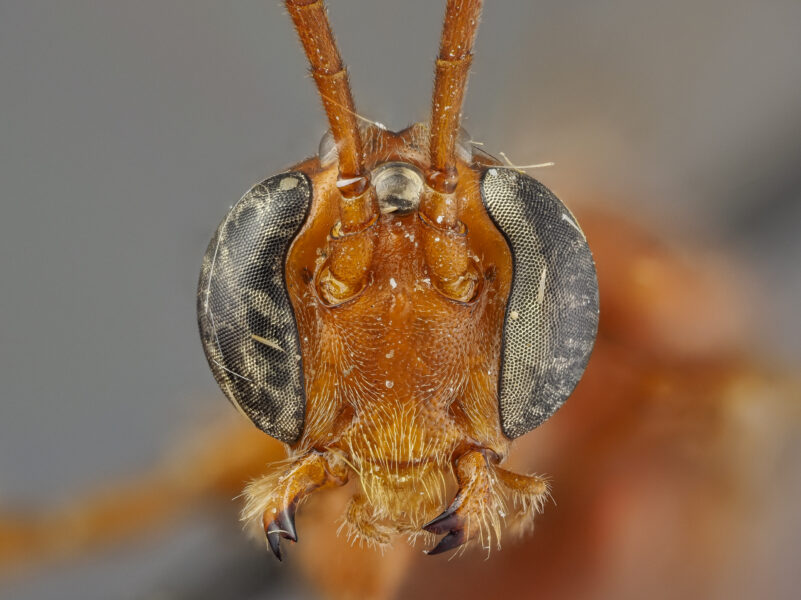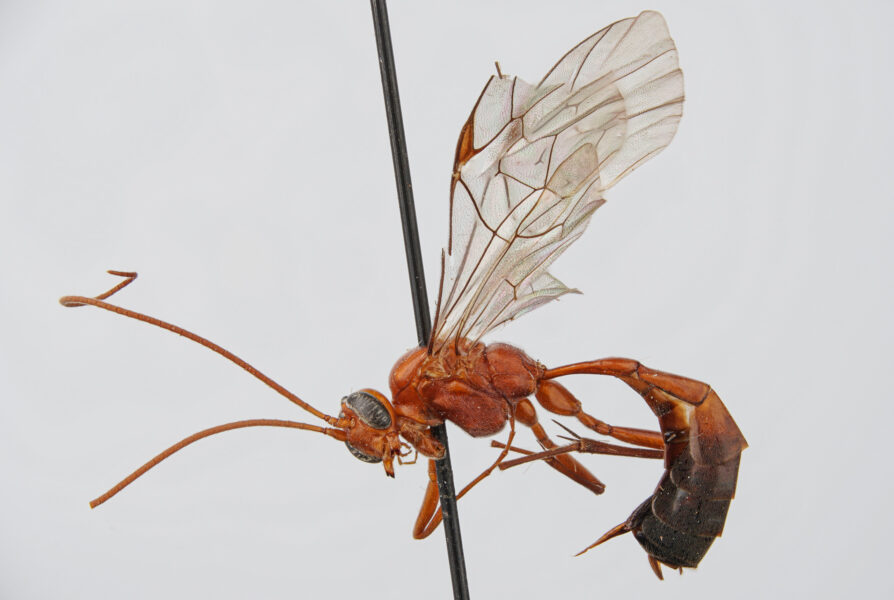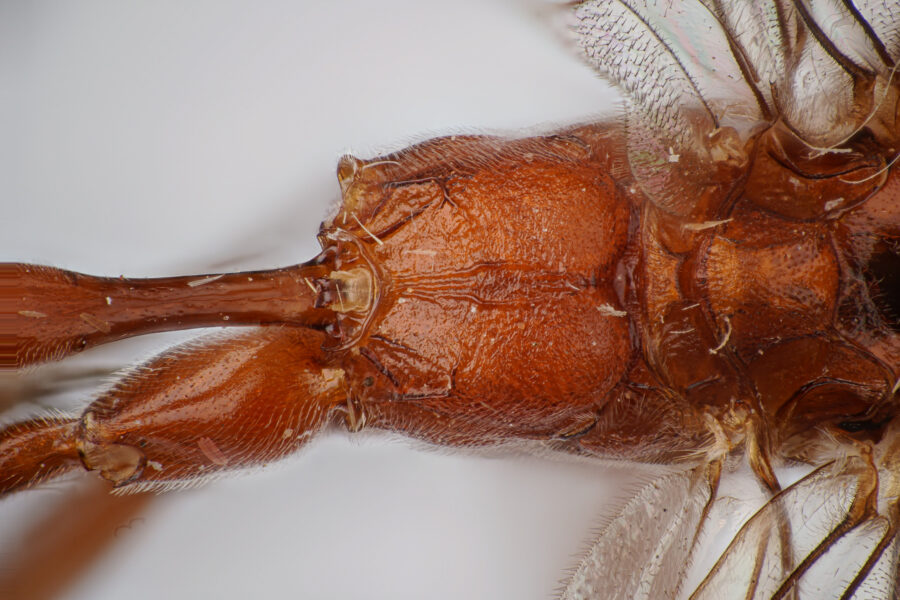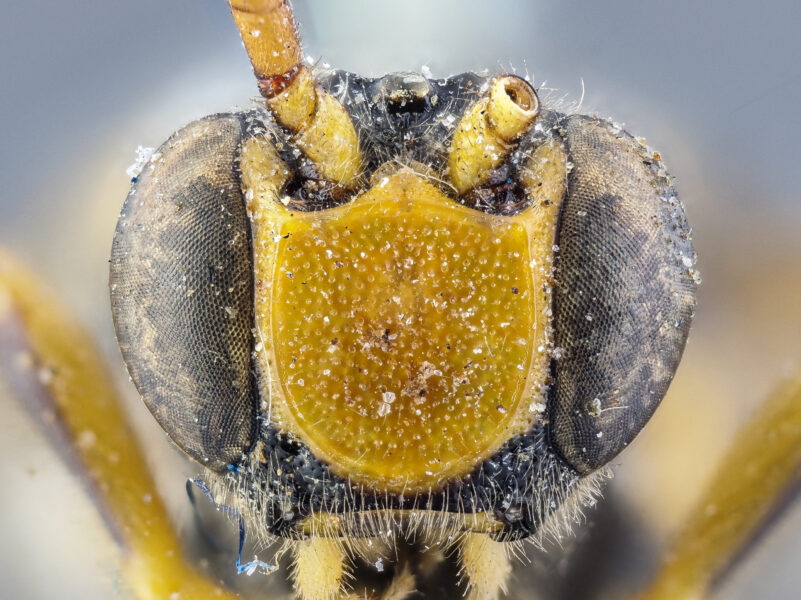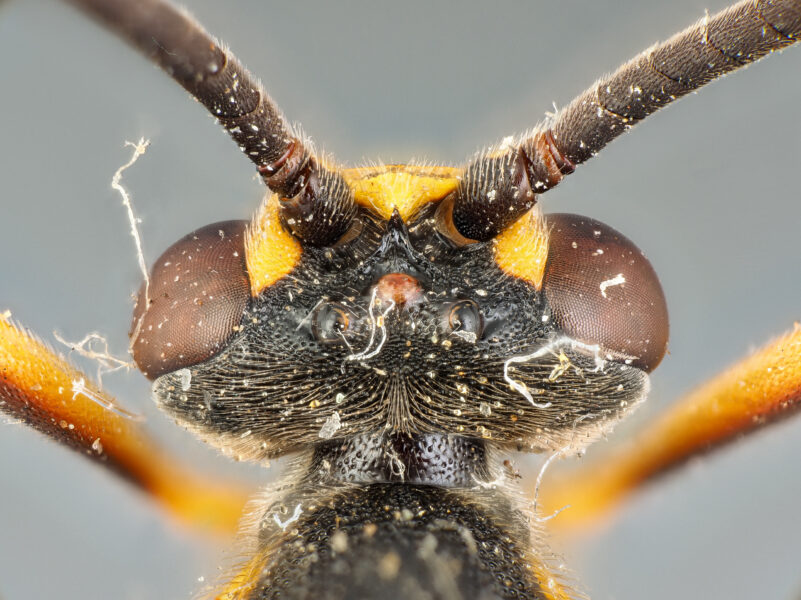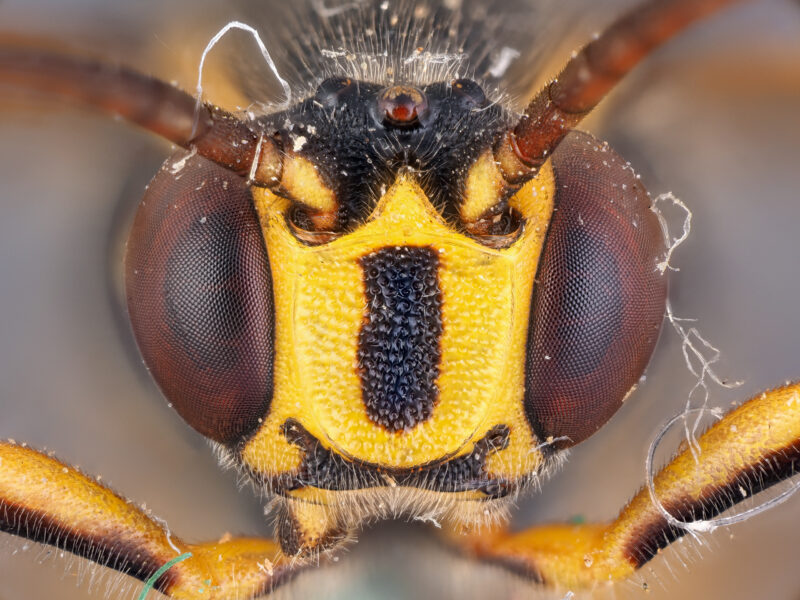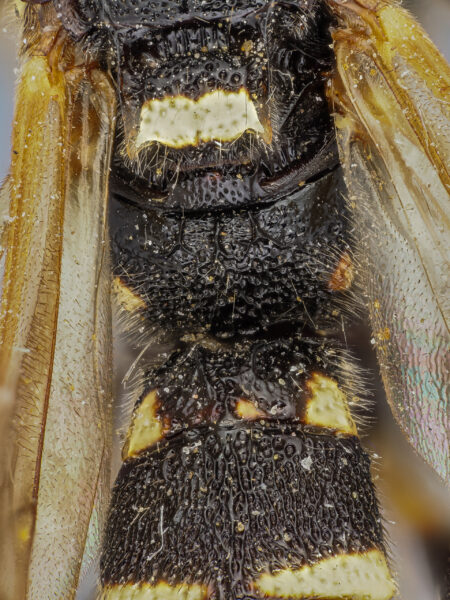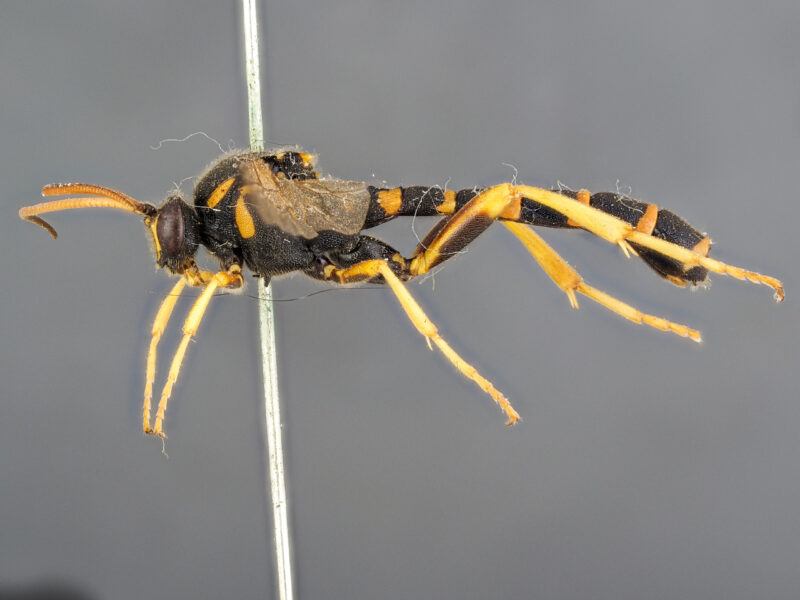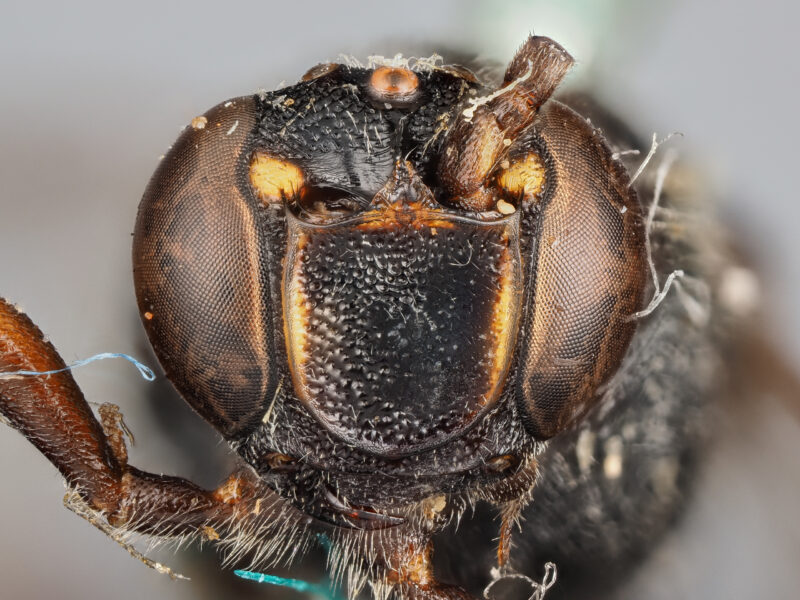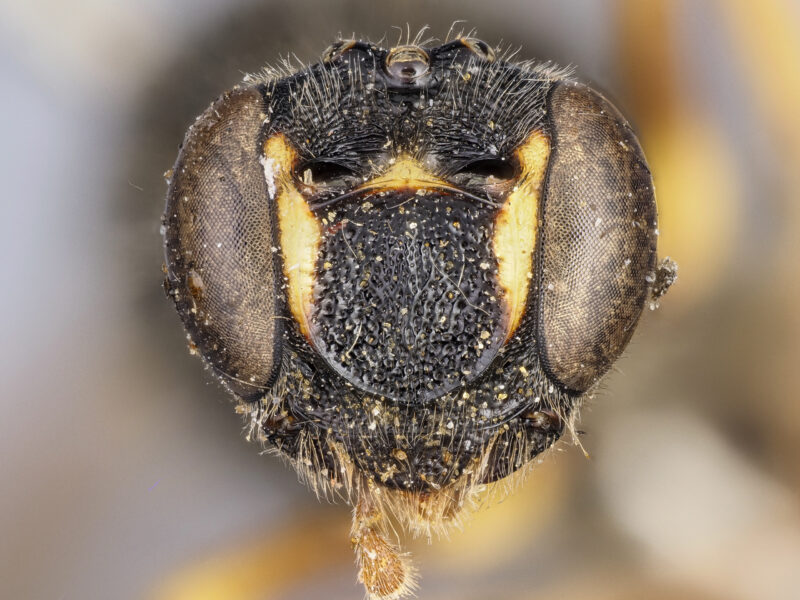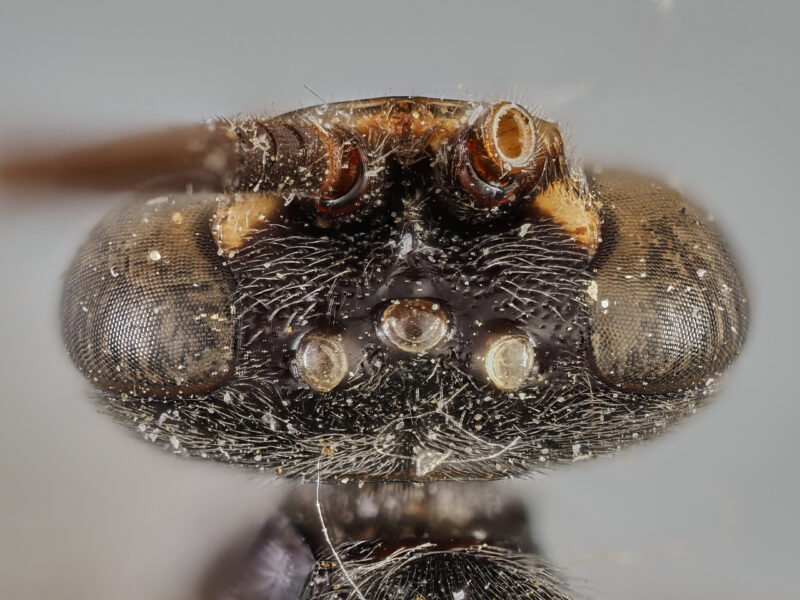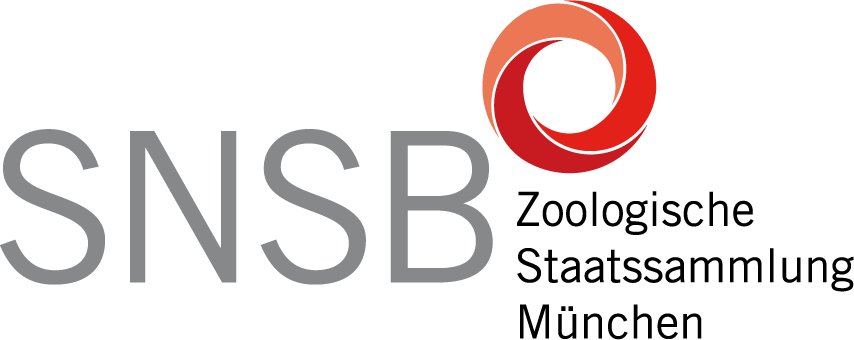High-throughput photography of insect specimens
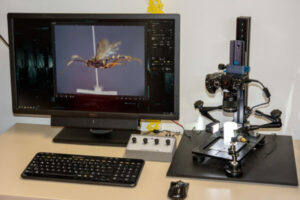
Due to the shallow depth of field associated with high magnification ratios, sharp images can only be obtained by either closing the aperture or by stacking, with the latter method providing significantly better image quality.
For image stacking, several or many images need to be created and processed. Compared to single images, this takes more time and was usually not suitable for high-throughput photography, because acceptable speeds in image creation were usually associated with losses in image quality.
For efficient and time-saving creation of depth-focused images, a photographic system was set up in the Hymenoptera section of the ZSM that allows depth-focused images with 100 or more images to be created in less than 30 seconds from acquisition of the image to the final (depth-focused) result. Applications of the system include routine photography of DNA barcoding specimens and photography of type specimens
Macro photography with the Olympus OM-D E-M1 Mark II
The Olympus OM-D E-M1 Mark II has a 20 megapixel sensor in Micro Four Thirds format, with a size of 17.4 x 13 mm. The Olympus M.Zuiko Digital ED 60mm F2.8 macro lens allows an image scale of up to 1:1, i.e. objects with a length of 17.4 mm filling the sensor format.
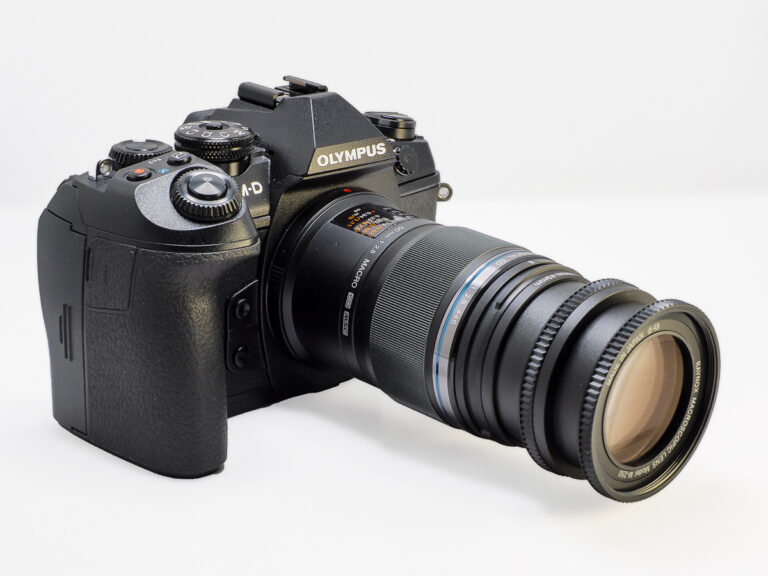
For higher magnifications, a Raynox DCR-250 close-up lens is used and two of these close-up lenses can be stacked to achieve image scales up to 2.1:1. For even higher magnifications, a Panasonic Lumix G X VARIO PZ 45-175mm F4.0-5.6 Asph is used, to which a Mitutoyo long working distance lens corrected to infinity is attached by means of an adapter. With the combination of tube lens and Mitutoyo Plan Apo 5X microscope objective, magnifications of up to 3.88x can thus be achieved. Even larger magnification ratios of up to 8.75:1 can be achieved with the Mitutoyo 10X Plan Apo.
Camera-lens combinations with close-up lenses and microscope objectives
| Objectiv | Focal length (mm) | Close-up lens | Working distance (mm) | Magnification max. | Field of view (mm) |
|---|---|---|---|---|---|
| M.Zuiko Digital ED 60mm F2.8 Macro | 60 | without | 190 | 1.0X | 17.4 |
| M.Zuiko Digital ED 60mm F2.8 Macro | 60 | Raynox DCR-250 | 39 | 1.6X | 10.9 |
| M.Zuiko Digital ED 60mm F2.8 Macro | 60 | 2 Raynox DCR-250 gestackt | 17 | 2.1X | 8.3 |
| Panasonic Lumix G X VARIO PZ 45-175mm F4.0-5.6 Asph. | 45-175 | Raynox DCR-250 | 117 | 0.4-1.4X | 44-12 |
| Panasonic Lumix G X VARIO PZ 45-175mm F4.0-5.6 Asph. | 130-175* | Mitutoyo 5x Plan Apo | 34 | 3.25-3.88X | 5.4-4.4 |
| Panasonic Lumix G X VARIO PZ 45-175mm F4.0-5.6 Asph. | 130-175* | Mitutoyo 5x Plan Apo | 34 | 6.50-8.75X | 2.7-2.0 |
*Focal lengths below 130mm lead to vignetting
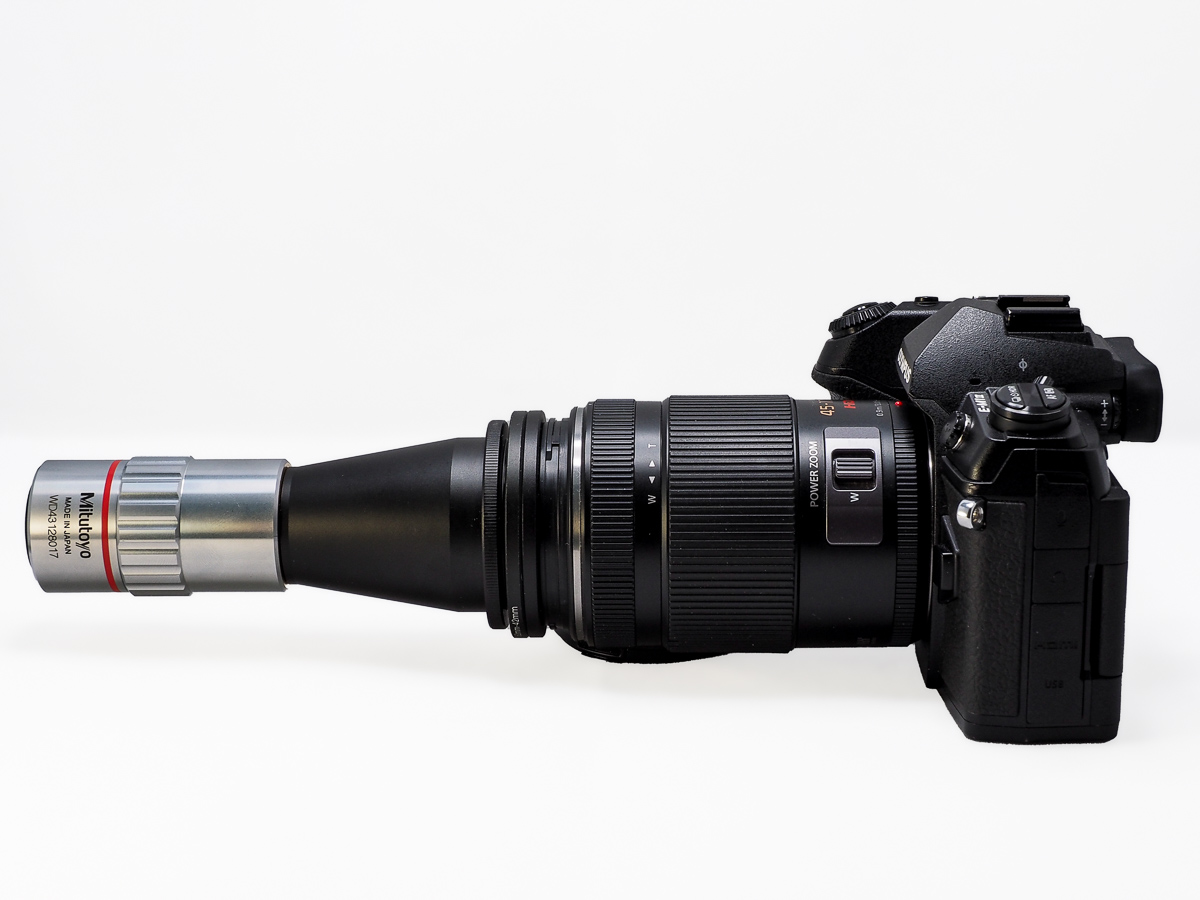
The integrated stacking function of the Olympus OM-D E-M1 Mark II
The Olympus OM-D E-M1 Mark II offers a built-in stacking function which allows up to 15 images to be taken and processed in-camera to create a sharp image. The following images of voucher specimens of ichneumonids were taken at an aperture of 5.6 using the internal stacking function and a step size of 5.
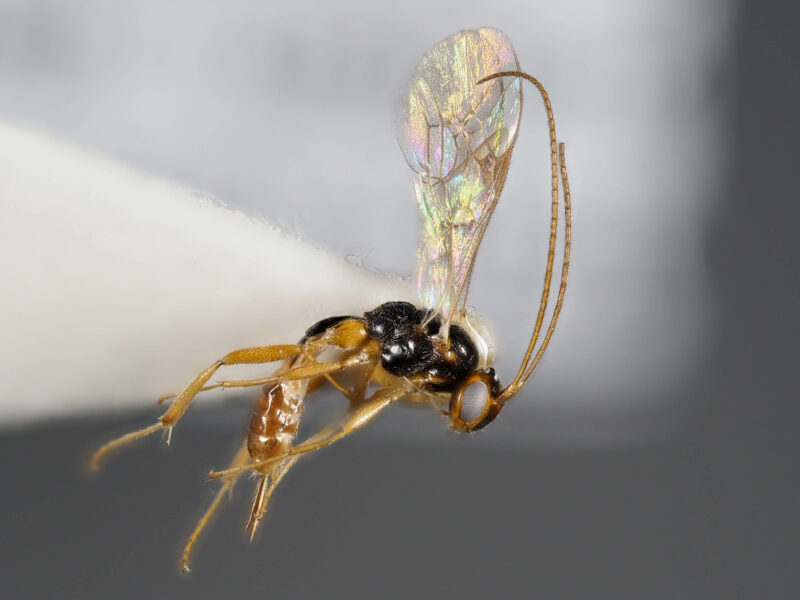
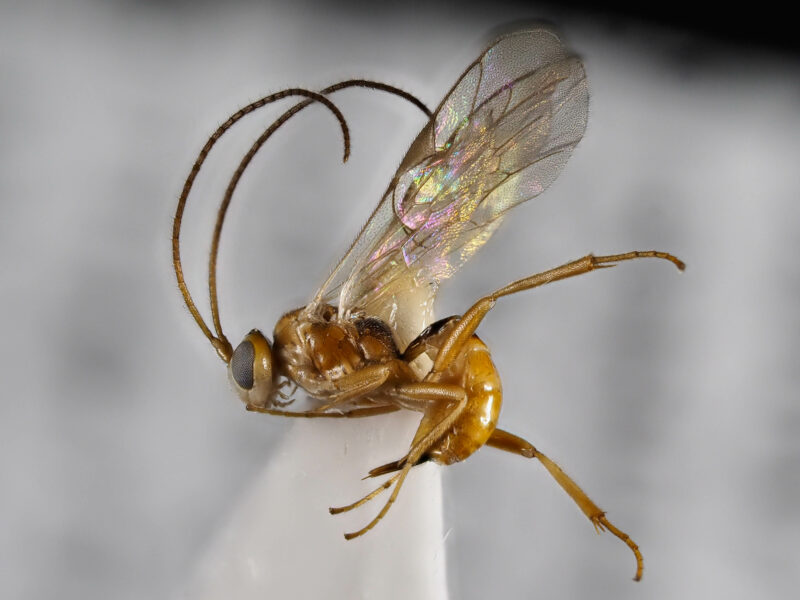
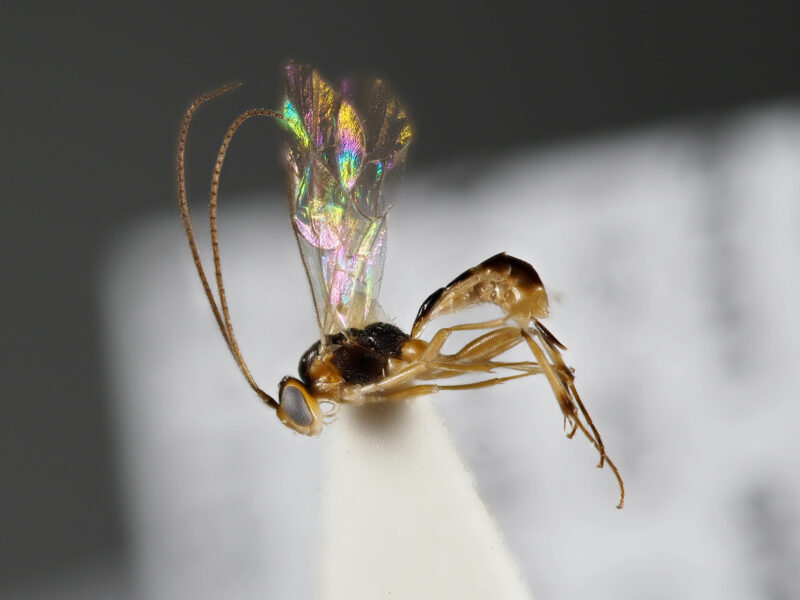
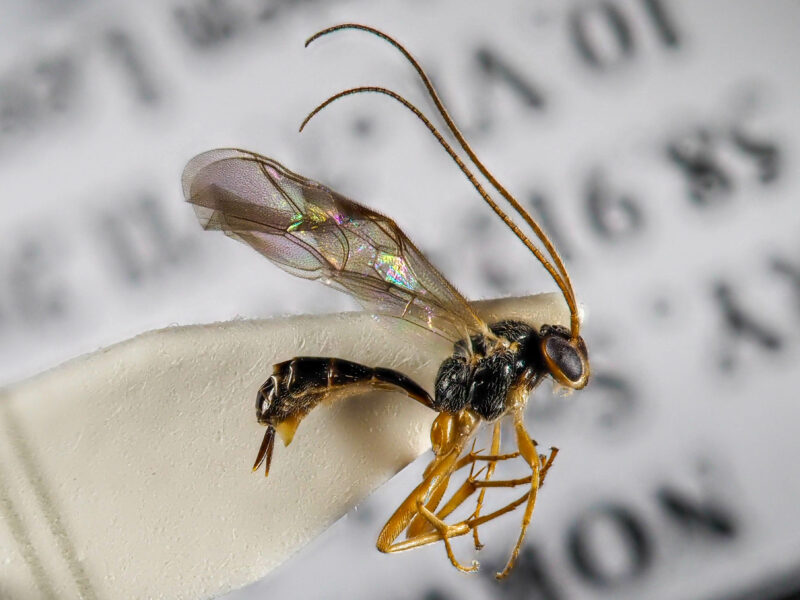
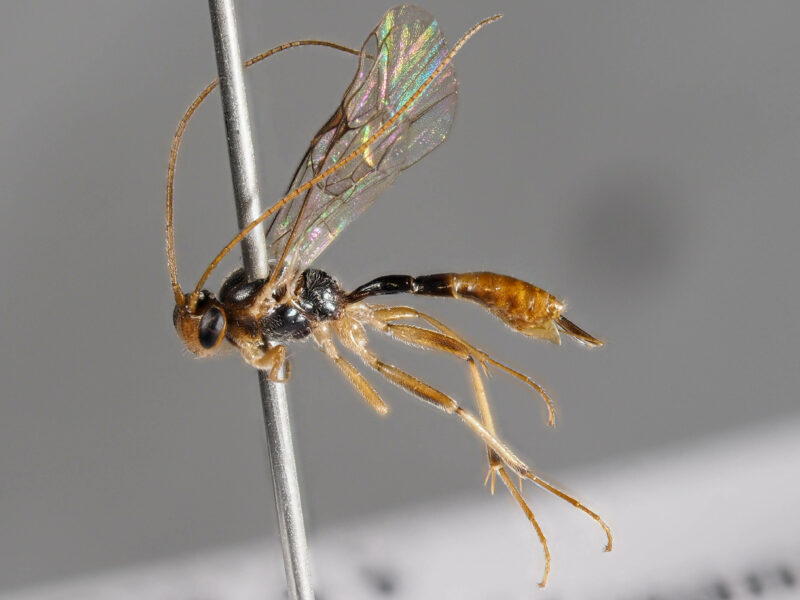
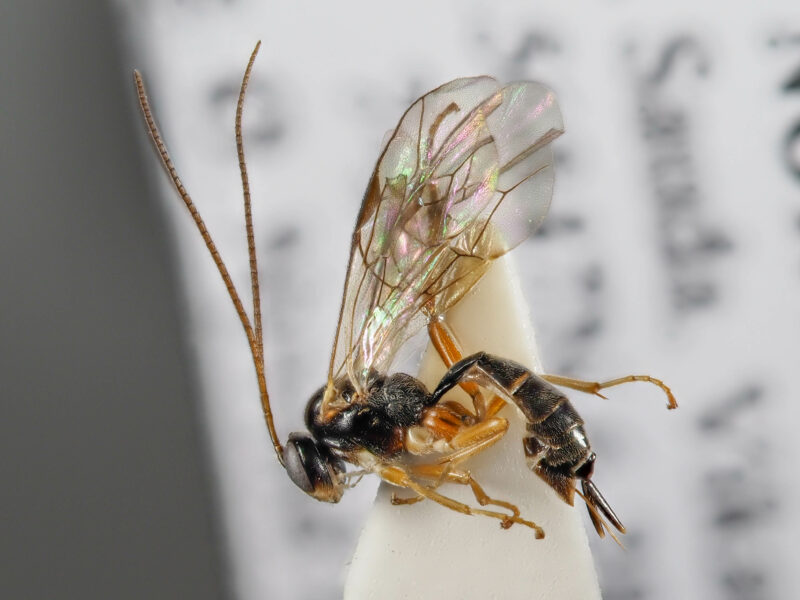
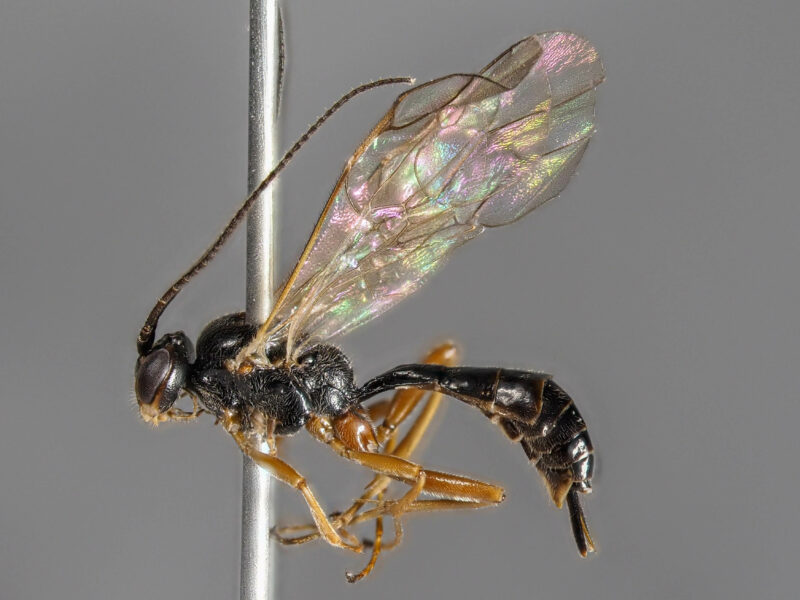
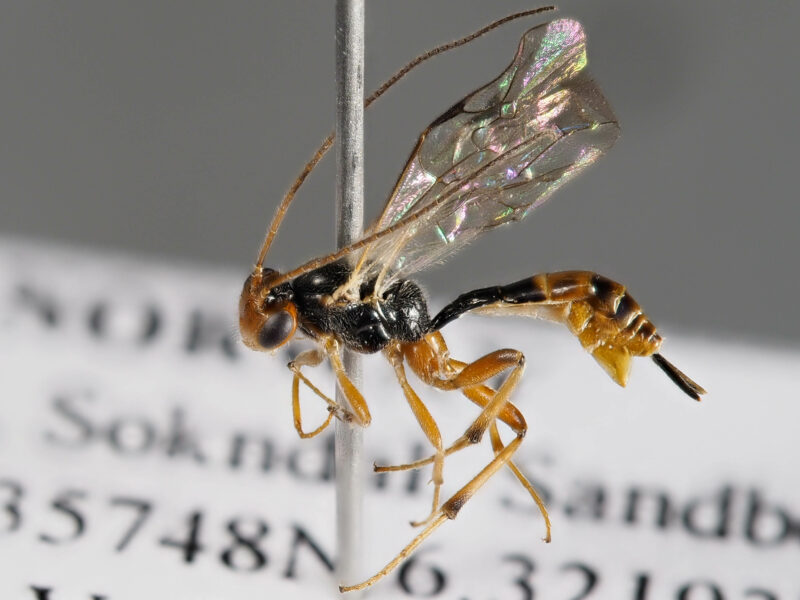
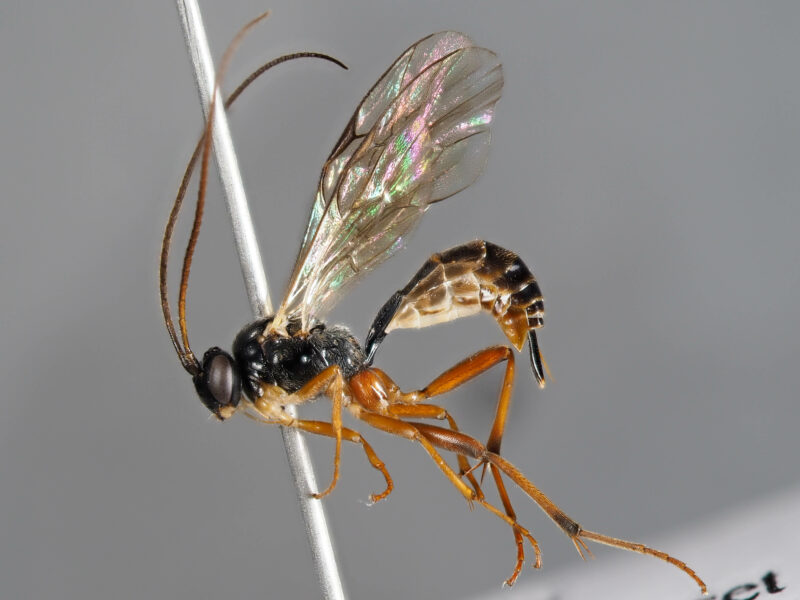
Image stacking with Helicon Focus
Using stacking software software such as Helicon Focus from Heliconsoft provides higher quality images than the camera’s internal stacking function, and is not limited to 15 images per stack. It is also easier to automate workflows, with automatic transfer of images from the camera to the PC and subsequent processing using Helicon Focus’ “Folder Monitor” feature introduced in version 7.
With the Olympus OM-D E-M1 Mark II up to 999 images can be captured in series, with series of 50-100 images at f/5.6 and increments of 3-5 usually providing sufficient depth of field for images of DNA barcoding vouchers. With the possibility of high-speed continuous shooting, the Olympus OM-D E-M1 Mark II shoots 100 images in about 10 seconds.
Lighting
For lighting, LED SN-1 LED lights, plus accentuated illumination using a “HELIOS” power LED from Stonemaster, are used. The lights have a CRI value of 99 at a color temperature of 5700 K which corresponds to daylight. For insects with shiny and highly reflective surfaces, a tubular Lee filter (type 129 Heavy Frost) is used as a diffuser to avoid reflections. This reduces the risk of local overexposure caused by point light sources that is difficult to corrected in postprocessing.
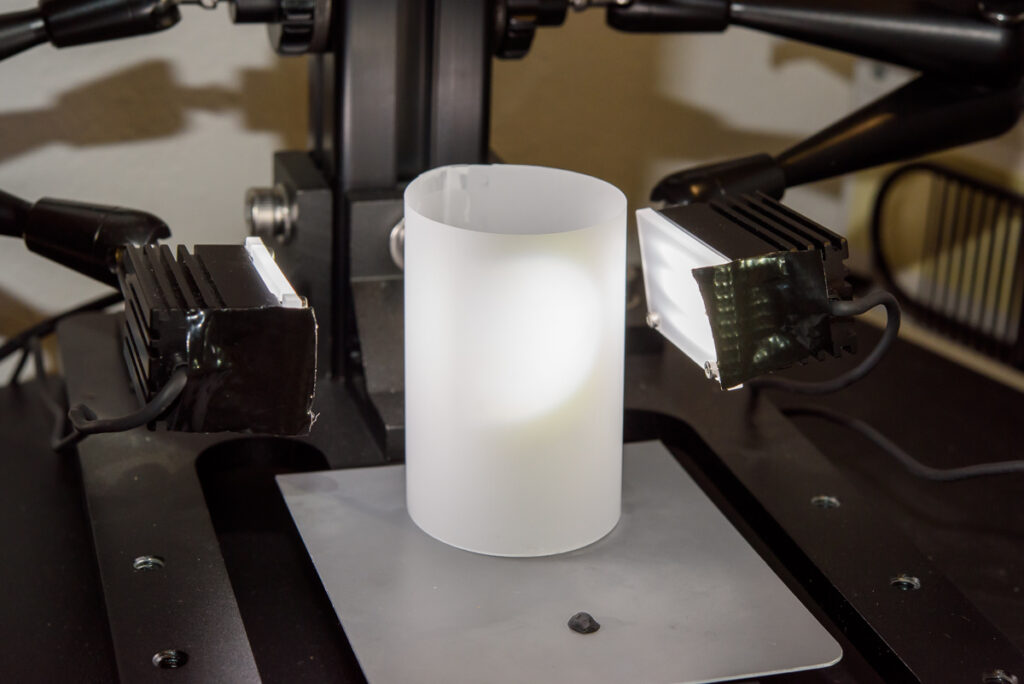
AMD Workstation PC

An AMD workstation with Ryzen Threadripper processor is used for image processing in Helicon Focus. Helicon Focus version 7 can use the graphics card for acceleration and the Radeon RX590 graphics card installed in the workstation takes about five seconds to process 100 individual images (20 megapixel jpeg format) using method C in Helicon focus.
Prozessor: AMD Ryzen Threadripper 2950X, 16 cores, 32 threads
Motherboard: ASUS ROG ZENITH EXTREME X399
RAM: 64 GB DDR4
Graphics: AMD Radeon RX 590
Sample images
The following images show type specimens of ichneumonid wasps (Ichneumonidae) from the Hymenoptera collection of the ZSM. The images were taken with the Olympus imaging system described above and are available on figshare (please cite the DOI when using the images for publications).
